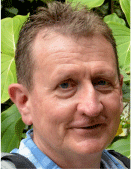Distribution and estimates of Australia’s identified energy commodity resources
Barry E. Bradshaw A B , Meredith L. Orr A and Tom Bernecker AA Geoscience Australia, Canberra, Australia.
B Corresponding author. Email: barry.bradshaw@ga.gov.au
The APPEA Journal 61(2) 325-330 https://doi.org/10.1071/AJ20116
Accepted: 10 May 2021 Published: 2 July 2021
Abstract
Australia is endowed with abundant, high-quality energy commodity resources, which provide reliable energy for domestic use and underpin our status as a major global energy provider. Australia has the world’s largest economic uranium resources, the third largest coal resources and substantial conventional and unconventional natural gas resources. Since 2015, Australia’s gas production has grown rapidly. This growth has been driven by a series of new liquefied natural gas (LNG) projects on the North West Shelf, together with established coal seam gas projects in Queensland. Results from Geoscience Australia’s 2021 edition of Australia’s energy commodity resources assessment highlight Australia’s endowment with abundant and widely distributed energy commodity resources. Knowledge of Australia’s existing and untapped energy resource potential provides industry and policy makers with a trusted source of data to compare and understand the value of these key energy commodities to domestic and world markets. A key component of Australia’s low emissions future will be the development of a hydrogen industry, with hydrogen being produced either through electrolysis of water using renewable energy resources (‘green’ hydrogen), or manufactured from natural gas or coal gasification, with carbon capture and storage of the co-produced carbon dioxide (‘blue’ hydrogen). Australia’s endowment with abundant natural gas resources will be a key enabler for our transition to a low emissions future through providing economically competitive feedstock for ‘blue’ hydrogen.
Keywords: energy commodities, gas resources, oil resources, reserves, contingent resources, hydrogen, carbon capture and storage.

Dr Barry Bradshaw is a geoscientist with 29 years of experience undertaking geological and geophysical studies and play-based prospectivity studies for conventional and unconventional hydrocarbon resources, geological storage projects and sediment-hosted mineral deposits. Barry is currently employed as the Energy Resources Advice activity leader at Geoscience Australia and has previously worked as a Principal Geologist at CGSS consultants, Senior Research Scientist at AGSO/Geoscience Australia and Research Scientist at Texas A&M University (USA). Barry graduated from the University of Sydney in 1988 and completed a PhD in Earth Sciences at the University of Waikato (New Zealand) in 1991. |

Dr Meredith L. Orr holds a BSc (Hons) from the Australian National University and a PhD in Earth Sciences from the University of Melbourne. She gained more than 10 years of experience as a lecturer, including in multidisciplinary research and teaching at Monash University. Since joining Geoscience Australia, she has worked with the National Offshore Petroleum Data and Core Repository, the Geological and Bioregional Assessments Program and as an energy resources geoscientist in Geoscience Australia’s Minerals, Energy and Groundwater Division. |

Dr Thomas (Tom) Bernecker is a sedimentologist/petroleum geologist who holds an MSc from the University of Aachen (RWTH), Germany and a PhD from Melbourne’s La Trobe University. His research work included the development of depositional models for coal and hydrocarbon-bearing basins in NW Europe as well as facies and diagenetic studies of tectonically overprinted Devonian carbonate sequences in Australia. After a lectureship at the University of Melbourne, Tom joined the Victorian Department of Natural Resources and Energy where his work was focused on the hydrocarbon prospectivity of the Gippsland and Otway basins. Tom joined Geoscience Australia as the team leader for the onshore hydrocarbon project in 2007 and from 2009 onwards has managed the offshore acreage release program, including the promotion of investment opportunities in Australia’s oil and gas sector. Tom is currently the Director of the Energy Resources Advice and Promotion section in GA’s Minerals, Energy and Groundwater division. He is a member of PESA, SEPM and SEAPEX. |
References
BP (2020). BP statistical review of world energy, 69th edition.Department of Industry, Science, Energy and Resources (2020a). Australian Energy Update, 2020. (Department of Industry, Science, Energy and Resources, Commonwealth of Australia: Canberra).
Department of Industry, Science, Energy and Resources (2020b). Resources and Energy Quarterly, December 2020. (Department of Industry, Science, Energy and Resources, Commonwealth of Australia: Canberra).
Department of Industry, Science, Energy and Resources (2020c). Technology investment roadmap: first low emissions technology statement 2020. (Australian Government, Department of Industry, Science, Energy and Resources, Commonwealth of Australia: Canberra).
Geoscience Australia (2021). Australia’s energy commodity resources assessment, 2021 edition. (Geoscience Australia: Canberra).
HESC (2021). HESC project milestone: Hydrogen gas now produced at Latrobe Valley site. Available at https://hydrogenenergysupplychain.com/hesc-project-milestone-hydrogen-gas-now-produced-at-latrobe-valley-site/ [Verified 6 May 2021].
Society of Petroleum Engineers (2018). Petroleum Resources Management System (revised June 2018). (Society of Petroleum Engineers).


